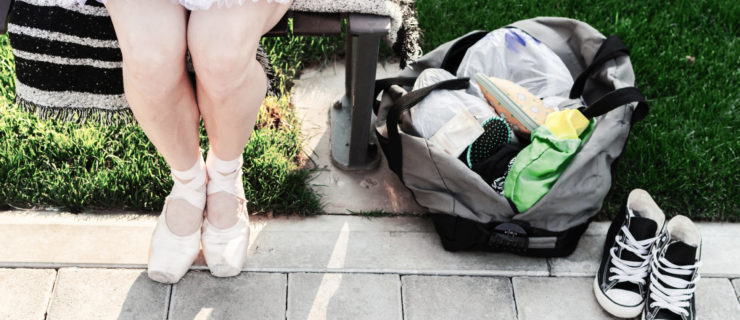Six Dance Bag Must-Haves + Delayed Onset Muscle Soreness

Megan Fairchild in George Balanchine’s Theme and Variations (by Paul Kolnik)
Six Dance Bag Must-Haves
Whether you’re spending your summer competing at Nationals, taking classes at your studio or training at an intensive, it’s important to make sure nothing stops you from dancing your best. Muscle cramps, blisters and even jittery nerves can all be alleviated—if you’re prepared! We caught up with New York City Ballet principal Megan Fairchild to find out the dance bag items that keep her on her A-game.
1. Paper towels.
“I use fresh paper towels in my pointe shoes as padding for each time I wear them. They keep my feet dry, prevent blisters and give me some extra cushioning.”
2. Foam toe spacers.
“I wear these between my first and second toes to keep my bunions from getting worse. They’re lifesavers.”
3. Thera-Band.
“I do a couple of exercises with a Thera-Band before class to warm up and strengthen my ankles. Then, I stretch my calves while lying on my back.”
4. Bouncy ball.
“This is to warm up my feet and work out any kinks. I also use it to roll out my shins, calves and hips.”
5. Johnson & Johnson Coach Sports Tape.
“Coach Sports Tape is my favorite toe tape. I wrap each big toe and little toe before every rehearsal to prevent blisters.”
6. Bach Rescue Remedy.
“I don’t use this every day, but sometimes a particular ballet or rough day calls for a couple sprays on the tongue!”
DID YOU KNOW?
Worrying over stressful situations can cause inflammation. Researchers at Ohio University found that when we constantly think about a negative circumstance—like an audition gone wrong—the protein that indicates inflammation in our bodies can rise. So the next time your mind starts to wander to the negative, think happy thoughts instead.

YOUR ACHES AND PAINS ADDRESSED: Delayed Onset Muscle Soreness (DOMS)
What is it?
DOMS is muscle soreness that appears around 12 hours after intense exercise or dancing and intensifies over the next two to three days. This type of soreness includes muscle tension, swelling and resistance to stretching.
What causes it?
DOMS is thought to have two triggers: It can result from tiny tears in your muscle tissue or the connective tissue that holds your muscle fibers together. It can also result from an alteration in your cells’ calcium levels, causing toxin build-up in your muscles.
How to deal:
•Drink lots of water, take a warm bath, use a heating pad and gently massage sore muscles for circulation.
•Do very light (no resistance) cardio, like riding a bike with no tension—increasing circulation in the muscles will help flush out toxins.
•If your muscles feel hot or swollen, alternate between applying ice and heat to the sore areas. Don’t stretch your muscles until your soreness has significantly decreased.
•If you have to use your muscles, it can be helpful to wear a gentle compression sleeve.
Consultant: Michelle Rodriguez, MPT, OCS,
CMPT, is the founder and director of
Manhattan Physio Group and has worked with dancers from New York City Ballet,
Cedar Lake Contemporary Ballet and more.
Texting while driving can distract you as much as having a blood alcohol level far over the legal limit,
according to a new study published in the journal Traffic Injury Prevention. Wait until you get to rehearsal to chat about the latest casting. Don’t touch your phone when you’re behind the wheel!




